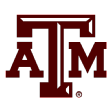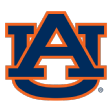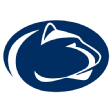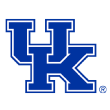Of the 13 Power 5 coaching changes so far this fall, just one, Iowa State, came from the Big 12 and SEC West. That’s where the 2016 hot seat watch is focused.
Feeling the heat
1. Charlie Strong, Texas

It will be an upset if Strong returns in 2017.
Strong’s interest in the Miami job -- more than a passing thing, coaches and agents have indicated -- illustrates that he isn’t all that certain about his future at UT, either.
What a way to go into 2016, huh? Look no further than this past Friday to see that these are desperate times for Texas’ football program.
The school president joined the AD and Strong in the attempt to convince Tulsa assistants Sterlin Gilbert and Matt Mattox to come run a Longhorns offense that managed just 1,751 passing yards this season. It is fairly uncommon for a school president to be so hands on with a head coaching hire, let alone the search for an assistant. Heck, an AD usually isn’t even very involved in coordinator searches beyond compensation.
It all demonstrates just how much Strong and UT’s brass felt they had to have Gilbert -- who, by the way, hasn’t called plays since he was an assistant at Eastern Illinois. He’s just three years removed from being the OC at Temple High School in East Texas.
That’s whose success that Strong, 11-14 in two seasons, is dependent upon. Also: For all its pride, which borders at times on hubris, Texas is now going to run some version of Baylor's offense.
2. Les Miles, LSU

We all know that Miles survived an awkward coup attempt last month, but it’s not as if he can feel all that comfortable about his long-term job security at LSU.
“We could be talking about all the same things next November,” an agent said last week. “I suspect we will be, actually. I don’t see much changing from this year to next.”
Sure, there’s a ton of returning talent, but the central problem -- shaky quarterback play -- remains an issue. Some close to the program haven’t ruled out the idea that Miles changes both coordinators before the spring.
His 111-32 record at LSU is impeccable, but critics point to the fact that the Tigers haven’t won more than five SEC games since 2012 as the catalyst for change.
Miles’ status for 2017 will likely be attached to next season’s conference record: six or more wins, and in the division hunt in late November, and he’ll get another year.
Will the QB play be strong enough to accomplish that?
3. Kevin Sumlin, Texas A&M

With Kyler Murray's transfer, Sumlin is losing his top two quarterbacks in a matter of weeks. Those close to the program say he’s weighing whether to replace play-caller Jake Spavital a year after he had to switch defensive coordinators.
So, as you see, there’s little stability right now for the Aggies, who have not been above .500 in SEC play since Sumlin’s first season (2012). A&M had Kliff Kingsbury calling plays for Johnny Manziel that year, and things haven’t been the same since.
The pressure is unique at a school that just ponied up $450 million for an overhaul of its stadium. Sumlin’s salary went to $5 million a year following the 2013 season, helped along by some overtures from USC and the NFL. Those suitors aren’t calling nearly as much any longer, and the temperature is rising in College Station. Of note, with as much heat as Miles is experiencing, he’s still beaten Sumlin in all four meetings. That would be a good one to turn around, especially with it being played as the final regular-season game.
4. Dana Holgorsen, West Virginia

Local media reports indicated Holgorsen was very nearly let go in the past week, so you know he doesn’t enter 2016 on very firm soil. A loss to 5-6 Kansas State in the regular-season finale was particularly troublesome.
“That’s not a game [West Virginia] should lose,” a source close to the program said.
A bowl win against Arizona State would bolster confidence in the job Holgorsen is doing, but 2016 becomes a crucial year regardless of the Cactus Bowl outcome.
Holgorsen’s critics, though, want to see the Mountaineers be more competitive than the sub-.500 league mark they’ve put up in three of their four seasons in the conference.
5. Darrell Hazell, Purdue

The theory in the coaching community is that Purdue didn’t want to wade into a crowded job market. That isn’t much of a profession of faith for Hazell and his staff, now 6-30 in three seasons. It feels like a bowl-or-bust year, and reaching six wins feels rather unlikely.
Warming
1. Gus Malzahn, Auburn

In talking last week with some coaches and agents, there’s real concern for the state of this program -- a crazy thought just two years removed from Auburn very nearly winning the final BCS title.
“That thing is going down in a hurry,” one Power 5 coach said.
Malzahn will have a different DC for the third consecutive season, and whoever he gets will surely be a step down from Will Muschamp in terms of reputation.
Offensively, Malzahn and the staff made such a poor evaluation of quarterback Jeremy Johnson that it set everything behind. If the offense doesn’t return to form in 2016, then it could very well make ’17 a make-or-break season for the Gus Bus.
2. James Franklin, Penn State

Inheriting a program still dealing with NCAA sanctions undoubtedly provided Franklin a lengthier grace period than a coach normally receives. The clock is beginning to tick more loudly, however, as the Lions get farther removed from the punishment.
Coaches noted how important the OC hire would be for Franklin, and they applauded his choice of Joe Moorhead from Fordham. Previously an assistant at UConn, Moorhead took a 1-10 Fordham program to 10-plus wins and FCS playoff appearances by his second and third seasons. Franklin’s PSU teams couldn’t find success with a specimen like Christian Hackenberg at QB, so the challenge is there for Moorhead.
Even in a difficult and deep division, Penn State has to find a way to be more of a factor in the Big Ten East. That’s the standard at PSU.
3. Mike MacIntyre, Colorado

Back in the summer, MacIntyre said that he thought he had a bowl team in 2015 and that quarterback Sefo Liufau was poised for a breakout season.
Well, the Buffs were again competitive, but they managed just four victories. Liufau, meanwhile, regressed, especially in the touchdown department. Granted he missed the final 2 ½ games of the year, but he still went from 28 TDs in 2014 to just nine in ‘15.
MacIntyre has done some positive things at CU, and peers believe in him as a coach, but the results aren’t even matching his own level of expectation.
4. Derek Mason, Vanderbilt

If there’s such a thing as a good 4-8, Vandy and Mason just had that type of season. The Commodores were far more competent with Mason calling defensive plays, and freshman QB Kyle Shurmur provided glimpses of hope for the fledgling offense.
Mason went a long way to cool the heat after a disastrous 2-10 season, but the Commodores will need to continue progressing for Mason to keep the calm.
5. Paul Johnson, Georgia Tech Yellow Jackets

Whatever goodwill Johnson earned in the Orange Bowl season in 2014 was given right back with the 3-9 thud in 2015.
It was Johnson’s worst season as a head coach since his first season at Navy (2-10) in 2002. Georgia Tech’s previous low win total was six, and it had never missed a bowl game under Johnson. He’ll badly need a bounce-back year in ’16.
On notice
1. Butch Jones, Tennessee

The $500,000 raise announced this week is modest in modern coaching -- as opposed to, you know, normal people -- but what it does do is boost expectation just that much higher for 2016. The Volunteers are undoubtedly improved from where they were in 2012, and they’ve won more games than the previous season in each of Jones’ three years.
But ...
Vols fans are eager for the payoff. They see a relatively weak SEC East, an in-flux division that will likely feature Tennessee as a preseason favorite. They see the talent level rising. They know how close the team was to beating playoff participant Oklahoma and division champ Florida. Even Jones has pointed toward 2016 as a year in which the roster will be set to make a leap.
If Tennessee gets to Atlanta, the school’s leadership will start figuring out which street to name for Jones. If not, he could be coaching for his job in 2017. That’s a fine line, but even Jones has pointed toward ’16 as a year in which the program should make a move.
2. Mike Riley, Nebraska

Nebraskans appreciate Riley’s nice-guy demeanor and all, but going from nine to five wins? Eh, not so much.
There were so many close losses -- the first five were by 13 total points -- that were somewhat explainable, excusable even. And then came Purdue. The Boilermakers hammered the Huskers in a loss that’s still sticking with fans. Riley had better have Nebraska back in a bowl game in Year 2.
3. Mark Stoops, Kentucky

In 2014, 5-1 became 5-7. In 2015, 4-1 became 5-7. It’s a mystery what happens to Stoops’ program in the final half of the season, but it’s undermining the positive things that he has done in Lexington. Every time we’re ready to credit achievement and progress, the Wildcats go in the tank.
There was a necessity to finish stronger in ‘15, so that idea becomes only more entrenched entering year No. 4.
The bar will never be set unreasonably at UK, but Stoops has to get over the October/November hump and get the Cats back to a bowl.
4. Kliff Kingsbury, Texas Tech

AD Kirby Hocutt told me a year ago that stability was in Texas Tech’s best interest, so no one there is in a rush to make yet another move. However, the Raiders have continued to be such a mess defensively (No. 118 in yards per play in 2015) that there’s pressure to get that side of the ball to a point where it’s merely passable.
That’s why Kingsbury gave DC David Gibbs full control of the defensive staff in recent weeks. After being a turnstile for coordinators, it’s already an improvement to have Gibbs returning.
Tech was a tougher out in 2015, but it needs to turn some of those close losses into W’s.
